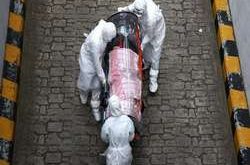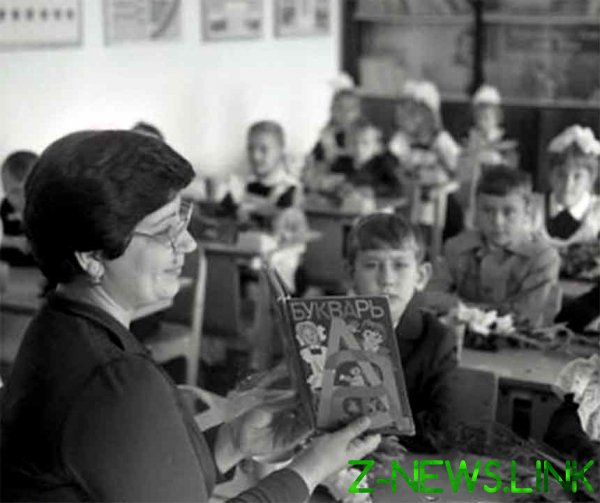
The Soviet economy began to crumble long before the General Secretary was Mikhail Gorbachev. Sometimes it manifested itself in phenomena, which at first glance might seem, on the contrary, a manifestation of the power of the Soviet economy. One of the manifestations of the beginning of the collapse of the Soviet economy was the introduction in the mid-70s the so-called “free textbooks” for high school.
The brain of the lover of Soviet antiquity is very primitive, like a child. From his point of view, a clear advantage of one economic system over another is the so-called “free” provision of the personal use of those services or goods. “Free” – that’s the alpha and omega of the Soviet was Infante, who originates from the Ivan the fool who rolls in the oven and all he gets for nothing “by magic”.
A Soviet Infante does not reflect on the fact that the so-called “free” services and values is not a consequence of wealth, but rather the paucity of the economy. For example, soldiers in the army also provided free clothing, food, and shelter, and even taught for free, and even pocket money “for cigarettes” was issued. In short, “not life, and raspberries”. However, it is necessary to have a very rich imagination to imagine life in army is very rich, comfortable and blissful. And how much of the sweats and nerves system then gripped the soldiers for all this “free abundance” – a separate conversation.
Some time ago I noticed that in the Arsenal of the antiquity, the list of all “free”, there’s a new position – free textbooks for high school. Free tutorial – it’s such an ecstasy! That’s why it was necessary to make a revolution, to kill and expel from the country of millions of people and relegating the rest to impoverished nursing. In the name of “free textbooks.”
What’s going on in the mind of such a Soviet patriot, I know. He does not even understand that arguing for the benevolence of the Soviet family free textbooks for school, he thus once again says just overall ugly picture of everyday life of Soviet families. It is only for the very poor it is painful to buy every year new textbooks for their children. For example, Papa Carlo with great difficulty acquired for Pinocchio ABC. He had to pawn his Turkish leather jacket. That is, rejoicing in the free Soviet books, Soviet Soviet patriot reduces people to the level of the poor Papa Carlo, who lived in the closet and all the values he had a hurdy-gurdy Yes jacket.
Well, no, in fact, did the Soviet people were so poor, that once a year couldn’t give the strength of ten rubles for a set of textbooks for a son or daughter? Take probably many are familiar with the textbook “History of the middle ages” for grade 6.
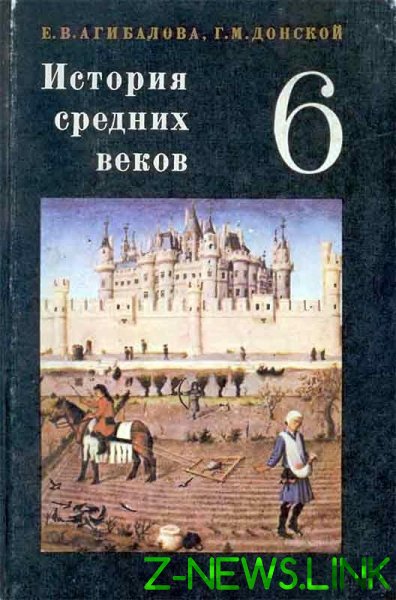
By the way, the picture for the cover of this tutorial is taken from “the Magnificent book of hours of Duke of Berry”, which in the XV century created the Dutch miniaturists brothers Limburg. Here’s a page from the book of hours, taken from illustration (if anyone is interested):

Miniatures from this book of hours was used extensively in the making of this tutorial, but about the brothers of Limburgo mention for some reason was not. This is the way of the best of the Soviet education. The textbook included illustrations, but the authorship is not indicated (in this tutorial, the authorship is indicated only at the Mona Lisa and the Sistine Madonna). Maybe the designers did not know? However, I’m not about that. I’m talking about the Economics of paid and free. So, look at the output of this tutorial.
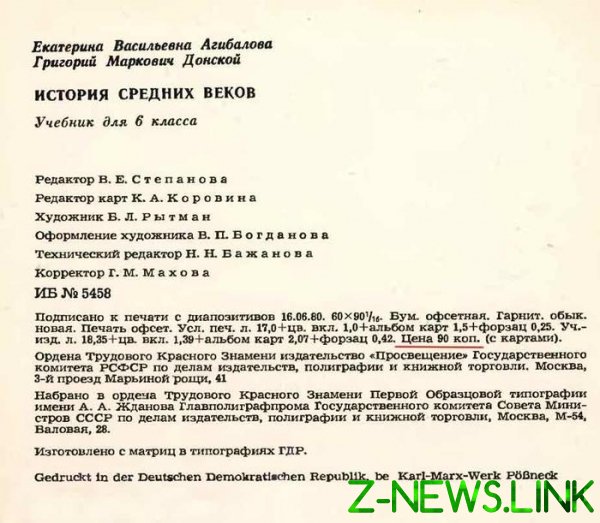
As you can see, the price is just 90 cents. And this despite the fact that the textbook is not printed in the USSR and in the GDR (which I still will tell separately), has color illustrations. But costs only 90 cents. And there were textbooks and cheaper. Some tutorials were generally designed for two years. For example, physics for grade 6-7.
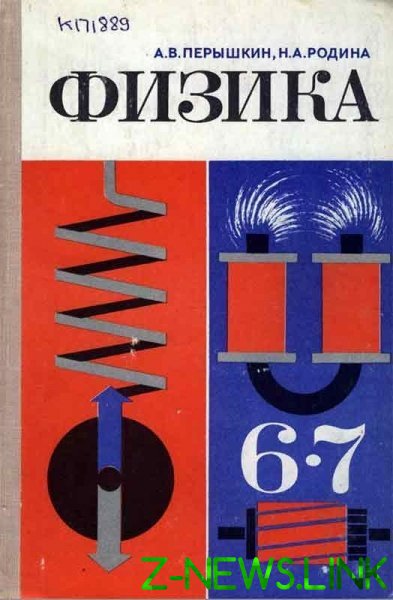
This tutorial is only 50 cents. So in a year or 25 cents per physics textbook.
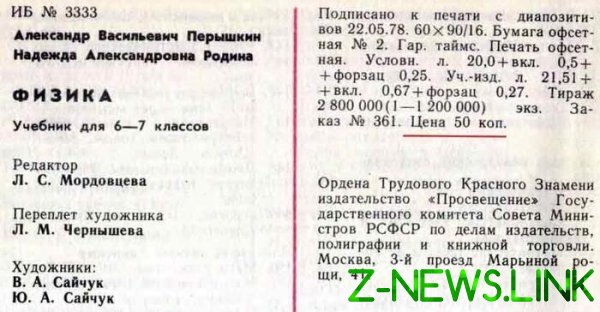
But Inorganic chemistry for class 9 (1976). Cost 31 cents.
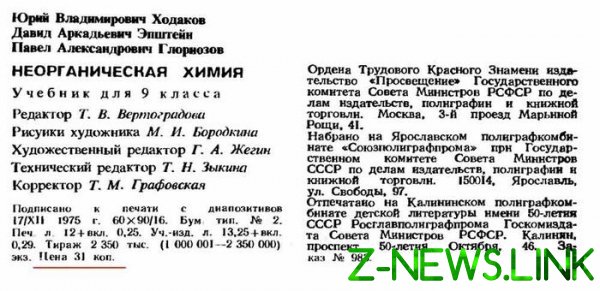
Therefore the total cost of the set of textbooks was somewhere around a tenner. The Junior and middle classes less (because there were fewer subjects), and the tenth, maybe a little more, but on average a tenner or even less. And that, in the opinion of the Soviet patriots that protect the bright image of the Soviet Union, chervonets per year on training their offspring – it was such a crippling burden for the Soviet family that free textbooks should be met with rejoicing?
But here I can somewhere with the Soviet patriots even identify. In fact, many Soviet families lived impoverished lives, but because for them and saving the extra ten rubles a year was a gift. On such small things and pierced Soviet patriots, angrily perceiving my assertion that the Soviet people lived impoverished lives. Ducat per year for textbooks not to pay – already a relief for the family budget. And if the family has two children – General dancing with a tambourine starts, what do you want? Ducat in the Brezhnev era – it’s two bubble vodka, and even nearly a kilo of cooked sausage Zakus you can buy. Unless of course in Moscow. In many other cities of the sausage of course was not to buy, but still the two rubles was something under two bottles of vodka to buy.
However, such joy for the Soviet people was not always. Once textbooks for middle school parents bought. Personally, I started to study (it was 1972) in the era of paid textbooks, free textbooks occurred in 1976. Here, for example, the textbook Peryshkina Physics for 6th grade.
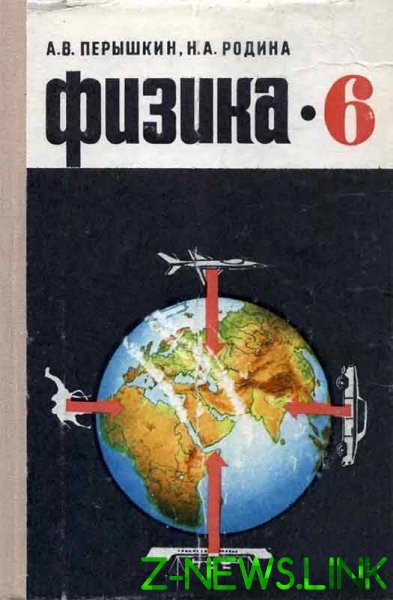
This tutorial still had to buy. And, by the way, some groans from the Soviet workers are not heard. At the end of the year, all handed over the money for textbooks and then received a package of brand new, still with the smell of printing textbooks. Then each one was wrapped books to the best of their abilities and capabilities. Personally, I bought my mother a special shrink wrap (per roll). Wrap this tape tutorial, iron iron (through the paper) and voila! tutorial obtained with a smooth shiny cover, which is easy to clean out the dirt without damaging the cover. To me this option is liked much more than leatherette cover or even wrap textbooks colored paper. But, in principle, not the essence. The main thing – the textbook was new and your own. You (or rather your parents) bought this book and it belonged to you.
When in the mid-70s introduced free textbooks, oddly enough, many children (especially girls) and their parents, took it with the famous bit of irritation. Some were even strongly opposed. Here’s a twist. How so? Modern Soviet patriots claim that the Soviet man is nothing so happy, as free, and free textbooks were glad not all the Soviet people – both children and their parents. Why is it so?
But because the devil, as it is known, hides in details. Today it is easy to say “Soviet students were free textbooks”, leaving out the details of this “free”. But in Soviet time the fools were not so much, as is commonly believed among Soviet patriots.
So, let’s look at three recent reversal of the textbook Peryshkina “Physics for 6th grade”.

This easy tutorial. In this case it does not matter what is written there. The element that appears in free textbooks, and so noticeable. In this tutorial it is not.
But the reversal already mentioned, but printed later (in 1981) of the textbook “the History of middle ages for 6th grade”.
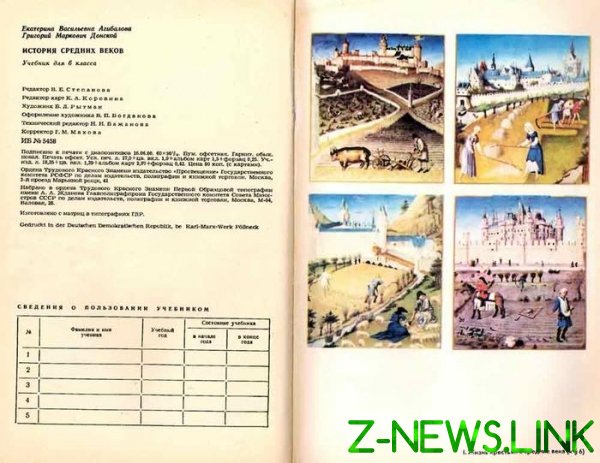
Here we see a new element that was absent in free textbooks. The table “information about the use of the textbook.” Here it is larger.
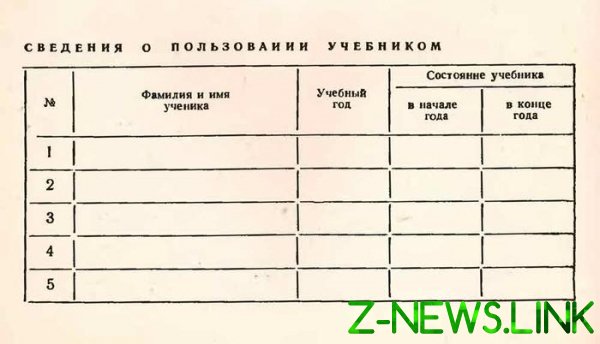
This small plaque has appeared in all Soviet school textbooks. And she, or rather the essence of the phenomenon, which was hidden behind it that angered many parents and children.
Pay textbook belonged to the family that bought it for their child. And here is a free tutorial belonged to the state. Just as “free apartment”, the state just gave it to the child for temporary use. This is a classic Soviet substitution of concepts, when the “temporary use” called “free.” From this point of view, and in the library because the book give people for free. For the little detail that the book should be in the library necessarily return, and in case of loss or damage – to compensate the cost. And not this book to present to someone.
That is, the Soviet “free” school textbook was not free. He was just a government-issued student for temporary use, but the student (or his parents) would have to pay for it in case of damage. But not even this caused the dissatisfaction of many.
As we can see, the table “Data on use of the textbook” consists of five lines. This means that each free tutorial has now been five years of operation. Five years of operation children, with almost daily use! Here it gave rise to many complaints.
If earlier a child every year was a brand new, clean books, with the introduction of “free” – and in fact library books, on a new textbook every year, it was not walking. After the introduction of this joy, each student at the end of the year had to pass the tutorial. That makes sense, because he did not belong to him. Class teacher checked the tutorial and put in the specified table evaluation. Understand that even the most careful student will not be able to use the book (textbook) for a year, and keep it in its original freshness. Not to mention the fact that some textbooks were designed for two years of study. Therefore, even the most diligent and careful student end-of-year tutorial will be in not the best condition. And what really there to talk about not very neat, and even losers? They have books at the end of the year was not much in perfect condition. Of course, that it was possible to erase (the pencil drawings, for example) was erased. But still traces remained. And ink painting? And all sorts of stains, dirt? Torn pages and broken covers?
Even a new textbook through the year could be pretty pathetic. And what can we say about the textbook, which lasts five years? Five years of continuous, almost daily use. Yes, what a book can survive that without significant damage to themselves?
That’s all, and understood from many Soviet parents, and students. They understood that the Communist state, even those who want and can look not rogue, but a normal person still puts in a niche of the poor. Well, I could think about the mother of some girls, which by September 1, buys her all new, but is forced to come to terms with the fact that textbooks this daughter had inherited from some losers in a very broken-up form. It is aesthetically unpleasant.
No, of course, for scoops is no such thing as “aesthetically unpleasant.” For them there is only “paid and free”. Elegant, new, but pay is bad. Ugly, used, but free is good. I think most scoops have grown up in families with very low even by Soviet standards a standard of living. Therefore, they praise everywhere any manifestation of Soviet free that memory back to remember how their poor mothers who thought every penny was glad of even such a miserable pittance as these “free textbooks”. Yes, rogue did not care that they got dirty and dinged up tutorial – the main thing it was “free”. But not everything in the USSR was like that. For many, the cost for textbooks was not something onerous. But the use of recyclable materials was unpleasant.
In addition, such a system gave rise to additional differentiation in the classroom. That particularly was felt at the time of issuance of textbooks. Those to whom the teacher was good (and excellent creeps), they received books cleaner. And the rest worse. In a society that declares its social justice and equality, these things have seen much more sensitive. If paid textbooks, all children received the same new books, then even the condition of the textbook was a degree of difference of the pupil in the eyes of the teacher.
But in fact, these “free” textbooks were not a SOP, albeit poor, from the Communists of the Soviet parents. No one ever said that the paid tutorials ruinous to the budget of the Soviet families. Because, as I showed above, their aggregate value was very small based on the year. So why the Communists have introduced “free” books?
And the economy – nowhere to hide. The Soviet economy in the mid-70s was still not in the worst condition (it will be bent gradually in the next two five-year plans), however, the Communists have tightened our belts where possible. Including the production of textbooks.
If you look at the number of printed textbooks, we see just enormous figures: more than two million copies of each textbook. On the one hand, parents buy these books. That is to say, the textbook at a price of 50 cents and a circulation of 2.5 million copies and brought in 1.25 million rubles. And immediately, because the parents bought the books immediately for the next year. However, in the Soviet economy the amount received from the Essentials (which includes textbooks), there is little that meant for the economy, because such products most often subsidized, and the Soviet economy is more than 60% consisted of MIC and processing. That is, the money from the sale of textbooks was a drop in the ocean of the Soviet economy. And every year tremendously loaded with industrial strength printers.
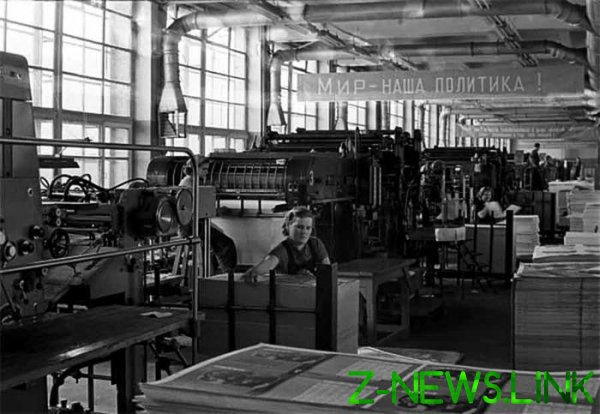
On the photo: the pressroom of one of the Moscow printing houses. 1964 (RIA-Novosti).
In the Soviet Union printers capable of printing high quality books, was quite small. And when required a special quality, and all orders were given abroad, as we have seen in the textbook “History of the middle ages,” which was printed in the GDR. The economy was bursting at the seams. And it was expressed not in the volume of cash that was obtained from the sale of consumer goods and in the utilization of industrial capacity. And printing capacity was very popular for the Soviet economy. First, the Communist propaganda was in need of non-stop production of its propaganda garbage in huge quantities. And besides, I needed to print and popular fiction, which in the Soviet Union was a permanent deficit. And, Yes, textbooks.
And starting the story with “free” textbooks, the Communists are now printing books downloaded printing capacity is not every year, but only once every five years. If you have previously any textbook needed every year to print again – just can’t bear the thought of Soviet economists now every textbook was printed once in five years. Thus was solved the question of the release printing capacity, and it was a question of Communist ideology – every thing people had to operate as long as possible, indefinitely prolonging life (hence all these numerous tips in magazines on how to extend the life of clothing and other personal items)
When the Soviet drool about the “free” apartments, education, or treatment, it is difficult to catch them by the hand and prove that “free” is often synonymous with “poor quality” and sometimes even “miserable”. It is impossible today to arrange a tour of the new building of the Soviet, or the Soviet hospital. But these same “free” textbooks, this thesis is not necessary to prove. Soviet “free tutorial” is definitely old, dirty and broken-up tutorial. Yes, of course, the knowledge that is contained in it, will not go away from the fact that some student painted on horns or genitals the portraits of the figures in this tutorial. However, this tutorial is already unpleasant to deal with. However, for people with the level of development of Pithecanthropus such a thing does not exist. They do not know what “beautiful,” “aesthetically pleasing”, “bright” – they only know “functional”. If the thing can serve as long as possible, and in addition it comes for free – this is the Soviet happiness. They are so arranged. Descended from the children of the underground, who grew up among factory chimneys and concrete fences, and that’s the attitude of the children of the underground are carrying with them through life.
And if all and went the pace, and the Soviet Union with its economy crashed in 1991, it is not excluded that the Communists would come down to “free” school uniforms. That something would be the fun parents, when their children would get used by someone in the form labeled “Information regarding the use of the form.” And so I would then communism came.
So real communism is when everything is “free” for temporary use and labeled “Data on use of property” for five years or more. Fun society. But “dirty” – the fact that the doctor ordered. They do not need another.
© 2020, paradox. All rights reserved.



